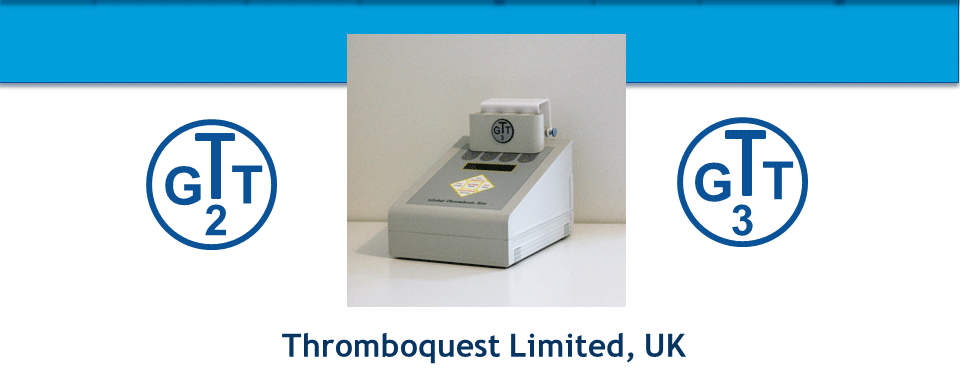Advantages of using the GTT
Shortcomings of conventional platelet function tests
• All platelet function tests in clinical use are performed from citrate-anticoagulated blood. In citrated blood at critically low serum calcium concentrations, the physiological response of platelets to various agonists and antagonists is distorted
• In citrate-anticoagulated blood, thrombin generation by activated platelets (the procoagulant activity of platelets), the major determinant of arterial thrombogenesis, cannot be detected. As such, in response to activation, only platelet aggregates but not fibrin-stabilized thrombi are formed
• To assess the risk of thrombosis or bleeding, or to monitor antiplatelet medication, necessitates the use of several different platelet agonists to test the response of platelets to the specific agonist (arachidonic acid, collagen, epinephrine, ADP, thrombin). Assessment of the true overall thrombotic/haemostatic status from these different measurements is difficult
• Although plasma or whole blood fibrinolytic capacity can be assessed by measuring whole blood clot lysis and levels of various plasma fibrinolysis markers, endogenous thrombolytic activity cannot be measured
Unique features of the Global Thrombosis Test
• Native, non-anticoagulated blood is used, so that plasma calcium ion concentration is physiological
• Relevant to pathology, the initial activating stimulus is high shear stress. Later in the development of occlusive thrombi all physiologically-important platelet agonists (TXA2, ADP, thrombin) are closely involved
• Thrombolysis, as opposed to fibrinolysis or clot lysis is measured
• The GTT-2 measures the time until the onset of thrombus formation. The GTT-3 additionally measures the dynamic thrombus growth under pressure, allowing the assessment of thrombus stability
• The GTT-2 can assess endogenous thrombolytic activity by the measuring the speed of onset of thrombolysis. The GTT-3 can additionally measure the rate of thrombolysis
• There is no need for several tests with different platelet agonists. The GTT Occlusion Time (OT) measurement can monitor antiplatelet medication including aspirin, P2Y12 receptor antagonists, GPIIb/IIIa receptor antagonists and oral thrombin inhibitors.
• 4.0 ml blood sample and one test tube per patient are needed
• 4 independently working channels allowing patients to be tested in quick succession
• Measurement should start <15 sec after blood withdrawal
• No calibration or internal standard required
